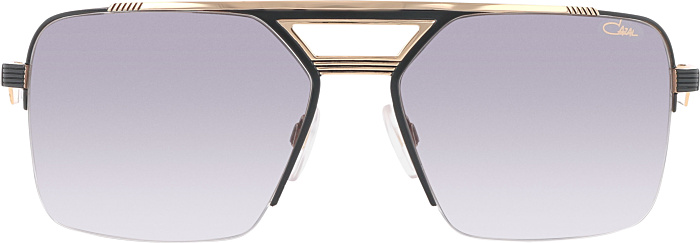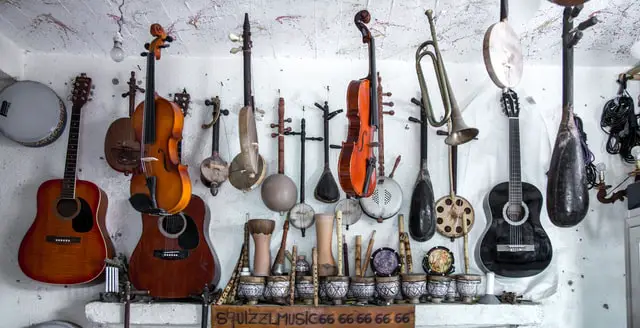Why are Gibson guitars so expensive?
Gibson guitars are expensive for several reasons:
-
Quality materials: Gibson uses high-quality materials, such as mahogany wood, in the construction of their guitars. These materials are more expensive than cheaper alternatives like basswood or alder.
-
Handcrafted construction: Gibson guitars are handcrafted by skilled craftsmen, which adds to the cost. This attention to detail and craftsmanship results in a higher-quality instrument.
-
Brand reputation: Gibson has a long history of producing high-quality guitars, and their brand is well-known and respected in the music industry. This reputation adds value to their instruments and contributes to their higher price.
-
Limited production: Gibson does not mass-produce their guitars, which means they are available in limited quantities. This exclusivity adds to the perceived value of their guitars and can drive up the price.
-
Rarity: Some Gibson models, such as vintage or limited edition guitars, are rare and highly sought after by collectors. This rarity can drive up the price of the instrument.
Frequently Asked Questions:
How to play guitar?
To play guitar, you will need a guitar and a pick.
-
Hold the guitar in a comfortable position, with the body resting on your right leg and the neck facing upward.
-
Place your left hand on the neck of the guitar, with your thumb behind the neck and your fingers on the strings.
-
Use your right hand to hold the pick and strum or pluck the strings.
-
Practice playing simple chords by pressing down on the strings with your left hand at different positions on the neck.
-
Practice scales by moving your left hand up and down the neck and playing each string in sequence.
-
As you become more comfortable with the guitar, try learning different songs and techniques such as fingerpicking or using a slide.
Remember to practice regularly and listen to other guitar players to learn new techniques and improve your skills.
How to tune a guitar?
-
First, identify the strings on your guitar from the lowest pitch to the highest pitch. The strings should be labeled with numbers or letters.
-
Place a guitar tuner on the headstock of your guitar. This device will help you tune the strings accurately by providing a reference pitch for each string.
-
Begin by plucking the low E string (the thickest string). Adjust the tuning key for this string until the tuner indicates that the string is in tune.
-
Move on to the A string (the second thickest string). Pluck this string and adjust the tuning key until the tuner indicates that the string is in tune.
-
Continue this process with the D, G, B, and high E strings (the thinnest string).
-
If you don’t have a guitar tuner, you can also tune your guitar by using a piano or by matching the pitch of each string to a reference pitch played on another instrument.
-
Once you have tuned all of the strings, it’s important to check the overall tuning of the guitar by playing a chord or a melody. If the guitar still sounds out of tune, you may need to adjust the tuning of one or more strings.
-
Remember to tune your guitar regularly, as the strings can become detuned over time due to temperature changes, playing, and other factors.
How to read guitar tabs?
Guitar tabs are a written representation of guitar music that uses lines, numbers, and symbols to indicate the placement of fingers on the guitar strings. Here is a basic guide on how to read guitar tabs:
-
Each line on the tab represents a string on the guitar. The bottom line represents the lowest-pitched string (the 6th string, or the low E), and the top line represents the highest-pitched string (the 1st string, or the high E).
-
Numbers on the lines represent the fret on which to play the string. For example, a “3” on the second line from the bottom (the A string) means to play the A string at the 3rd fret.
-
Symbols are used to indicate various techniques, such as bends, slides, and hammer-ons. For example, a “b” symbol followed by a number indicates a bend at that fret.
-
A vertical line, or “bar,” is used to separate different measures of music.
-
A number above a line or symbol indicates how many times to repeat that measure or technique.
-
A “|” symbol above or below the tab indicates a pause or a change in tempo.
-
The order in which the lines and numbers are read from left to right represents the order in which the notes should be played.
Remember to always refer to the key signature or chord chart to understand the pitch of each string. Practice reading and playing along with guitar tabs to become proficient in interpreting and playing guitar music.
How to string a guitar?
-
Remove the old strings from the guitar by slipping them off the tuning pegs and pulling them through the bridge.
-
Place the new strings in order from low to high (for example, the low E string on the bottom and the high E string on the top).
-
Take the low E string and thread it through the hole in the bridge, then bring it up to the first tuning peg on the headstock.
-
Pull the string through the hole in the tuning peg and wrap it around the peg in a clockwise direction, leaving about an inch of slack between the peg and the string.
-
Repeat this process with the rest of the strings, starting with the A string and working your way up to the high E string.
-
Once all the strings are in place, use a guitar tuner or your ear to tune the strings to their correct pitches.
-
Finally, stretch the strings by gently pulling on them to remove any slack and help them stay in tune.
How to hold a guitar?
-
Stand with your left foot slightly forward if you are right-handed, or your right foot slightly forward if you are left-handed. This will give you balance and stability while playing.
-
Hold the guitar with your dominant hand on the neck, just above the body.
-
Place your thumb on the back of the neck, with your fingers wrapping around the neck. The thumb should be about halfway up the neck, with the fingers resting on the fretboard.
-
Hold the body of the guitar with your non-dominant hand, resting the base of the guitar on your leg.
-
Adjust the guitar so that it is at a comfortable angle for you to play. The neck of the guitar should be tilted slightly towards you, and the body of the guitar should be parallel to the ground.
-
Practice moving your fingers up and down the neck, and pressing down on the strings to play different notes. Practice playing different chords and melodies, and adjust the position of the guitar as needed to find a comfortable and effective playing position.
How to restring a guitar?
To restring a guitar, you will need the following items:
- New guitar strings
- A wire cutter
- A guitar string winder (optional but recommended)
Step 1: Loosen the strings. Using your wire cutter, cut the strings one by one. Loosen the string enough so that it is no longer taut and can easily be removed from the guitar.
Step 2: Remove the strings. Once the strings are loose enough, remove them from the guitar. Take care not to drop the bridge pins or any other small pieces that may come loose.
Step 3: Clean the guitar. Use a cloth to wipe down the guitar, removing any dirt or grime that may have accumulated on the strings or the guitar itself.
Step 4: String the guitar. Begin by placing the new strings in the correct order and orientation. Make sure the strings are seated properly in the bridge and the nut.
Step 5: Tune the guitar. Use your guitar string winder (if you have one) to tune the guitar to the desired pitch. If you don’t have a string winder, use a tuning fork or a tuner to tune the guitar by ear.
Step 6: Cut off the excess string. Once the strings are tuned to the desired pitch, use your wire cutter to cut off the excess string. Make sure to leave enough string to hold the ball end in place.
Step 7: Play and enjoy your newly restrung guitar!
Which u.s. state quarter features a guitar, a trumpet, and a fiddle?
The state quarter features a guitar, a trumpet, and a fiddle is the Tennessee state quarter.
How to hold a guitar pick?
To hold a guitar pick, follow these steps:
- Hold the pick between your thumb and index finger.
- Place the pick between the top joint of your index finger and the bottom joint of your thumb.
- Adjust the pick so that the flat edge is facing your fingers.
- Place your middle finger on top of the pick to hold it securely.
- Keep your wrist relaxed and let your fingers move naturally as you play.
It may take some practice to find the grip that works best for you, so don’t be afraid to experiment with different positions until you find what feels comfortable.
How to learn guitar?
- Start with the basics: Get a guitar that is comfortable for you to play and learn how to hold it properly. Familiarize yourself with the different parts of the guitar, such as the strings, frets, and chords.
- Begin with simple chords: Start by learning the basic chords, such as G, C, D, and Em. Practice switching between these chords and strumming them in different rhythms.
- Practice daily: Set aside time each day to practice playing your guitar. Consistency is key to improvement.
- Learn music theory: Understanding music theory will help you understand how different chords and scales fit together and give you a deeper understanding of the music you are playing.
- Find a guitar teacher: Consider hiring a guitar teacher or taking online lessons to guide you through the learning process. They can provide personalized feedback and help you progress faster.
- Play with others: Join a guitar group or start jamming with friends to improve your skills and have fun making music together.
- Don’t get discouraged: Learning to play the guitar takes time and practice. Don’t get discouraged if you don’t see immediate progress and remember to have fun while you learn.
Who invented the guitar?
The guitar was not invented by a single person, but rather evolved from various stringed instruments. The modern guitar likely descended from the lute and vihuela, which were popular in Spain and Italy during the Renaissance. The first known depiction of a guitar-like instrument is from ancient Egypt, which dates back to around 3000 BC. The modern guitar as we know it today likely originated in Spain in the 16th century, with the development of the five-string Guitarra Quinta.
How many strings does a guitar have?
Most guitars have six strings. However, some guitars may have more or fewer strings, depending on the type of guitar and the style of music it is used for. For example, a 12-string guitar has six pairs of strings, with each pair tuned to the same pitch. A bass guitar typically has four strings, and a classical guitar may have seven or eight strings.
How to change guitar strings?
-
First, gather all necessary materials, including a new set of strings, a pair of wire cutters, a string winder (optional but helpful), and a cloth or small towel to protect the guitar’s finish.
-
Start by loosening the tension on the old strings. You can do this by turning the tuning pegs counterclockwise or using the string winder. Be sure to loosen all of the strings evenly, as you don’t want to put too much strain on any one of them.
-
Once the strings are loose enough, cut them using the wire cutters as close to the bridge as possible. If you’re using a string winder, you can use it to remove the strings from the tuning pegs more easily.
-
Next, remove the old strings from the bridge. There are a few different types of bridges, so refer to your guitar’s manual or do a quick Google search to determine the best way to remove the strings from your particular guitar.
-
Once the old strings are removed, you can begin installing the new ones. Start by threading the new string through the hole in the bridge and pulling it through until there’s enough slack to wrap it around the tuning peg.
-
With the string in place, you can begin winding it around the tuning peg. Be sure to wind the string in the same direction that the peg turns (clockwise for most guitars). You’ll want to wind the string tightly enough that it stays in place, but not so tightly that it’s difficult to turn the tuning peg.
-
Once the string is securely in place, you can tune it to the desired pitch by turning the tuning peg. You’ll want to repeat this process for each string until all of the strings have been changed and tuned.
-
Finally, be sure to check the overall tension of the strings by pressing down on them at various points along the neck. If any of the strings feel too loose or too tight, you may need to adjust the tension by turning the tuning pegs until everything feels balanced.
Who invented the electric guitar?
The electric guitar was invented by George Beauchamp and Adolph Rickenbacker in the early 1930s.
How long does it take to learn a guitar?
It depends on the individual’s natural ability, dedication, and how much time they are willing to put into practice. Some people may be able to learn basic chords and melodies within a few months, while others may take several years to become proficient. It is important to remember that learning a guitar is a continuous process and there is always room for improvement and growth as a musician.
How to play guitar for beginners?
-
Start by learning the basic chords. Some good ones to start with are G, C, D, and A. Practice strumming and changing between these chords smoothly.
-
Practice fingerpicking. This involves using your fingers to pluck the strings individually rather than strumming with a pick. Start with simple patterns and gradually increase the complexity as you improve.
-
Learn how to read guitar tabs. Tabs are a simple way to notate guitar music, with each line representing a string and numbers indicating which fret to play.
-
Practice your rhythm. This involves keeping time and playing in time with the beat. A metronome can be a helpful tool for this.
-
Experiment with different genres and styles of music. This will help you develop your skills and find what you enjoy playing the most.
-
Take lessons from a qualified guitar teacher or use online resources to learn more advanced techniques and theory.
-
Don’t be afraid to make mistakes. Everyone makes mistakes when learning something new, so just keep practicing and you will improve over time.
Where are Gibson guitars made?
Gibson guitars are made in Nashville, Tennessee, USA.
How much are Gibson guitars?
Gibson guitars can range in price from around $600 for a lower-end model to over $10,000 for a high-end model. The specific price of a Gibson guitar will depend on the model, materials used, and any additional features or customization.
How to play the electric guitar?
To play the electric guitar, you will need:
- An electric guitar
- An amplifier
- A guitar pick
- A strap to hold the guitar
Step 1: Hold the guitar in your lap with the body facing up. Place the strap over your shoulder and adjust it so that the guitar sits comfortably on your body.
Step 2: Hold the pick between your thumb and first finger. You can hold it with a light grip, or you can grip it firmly between your fingers.
Step 3: Place your index finger on the first fret of the guitar’s neck, just above the first string.
Step 4: Strum the strings with your pick, starting from the top and moving downward. You can strum all the strings at once, or you can pick individual strings to create different sounds.
Step 5: Experiment with different strumming patterns and finger placements to create different sounds and melodies. You can also use the guitar’s pickups to create different tones by adjusting the volume and tone controls.
Step 6: Practice regularly to improve your skills and develop your style. Consider taking lessons from a professional guitar teacher to learn more advanced techniques.













